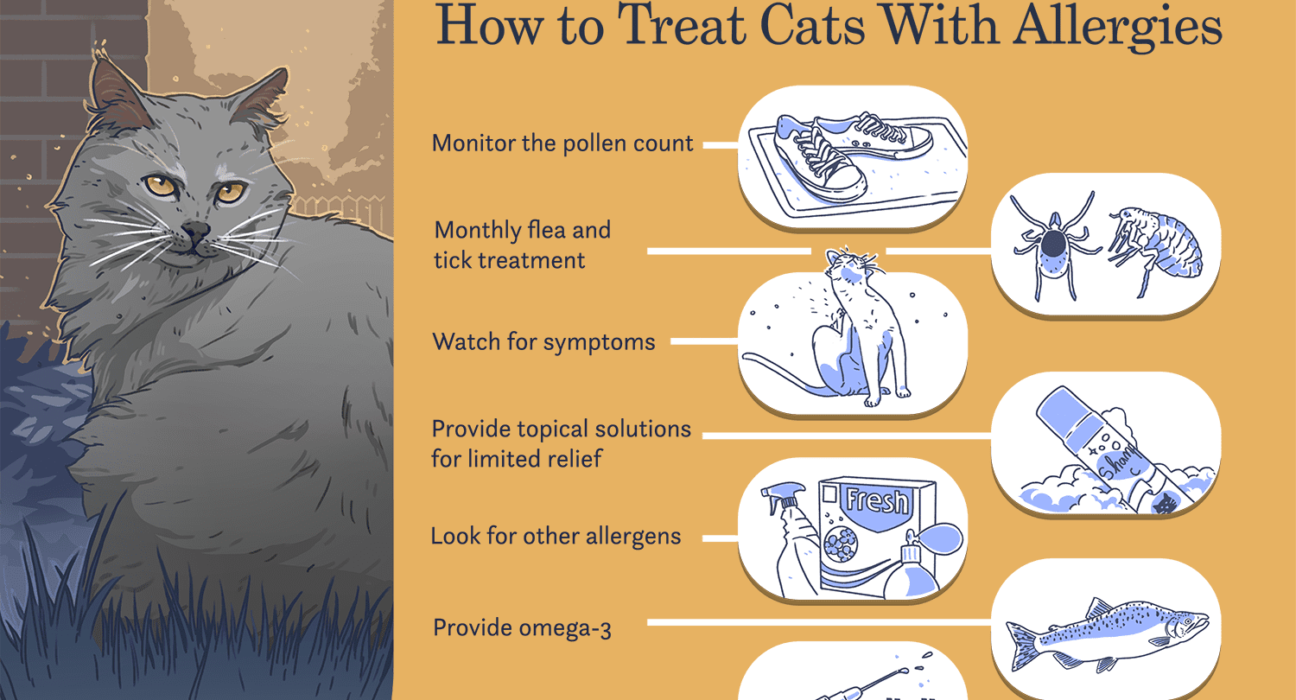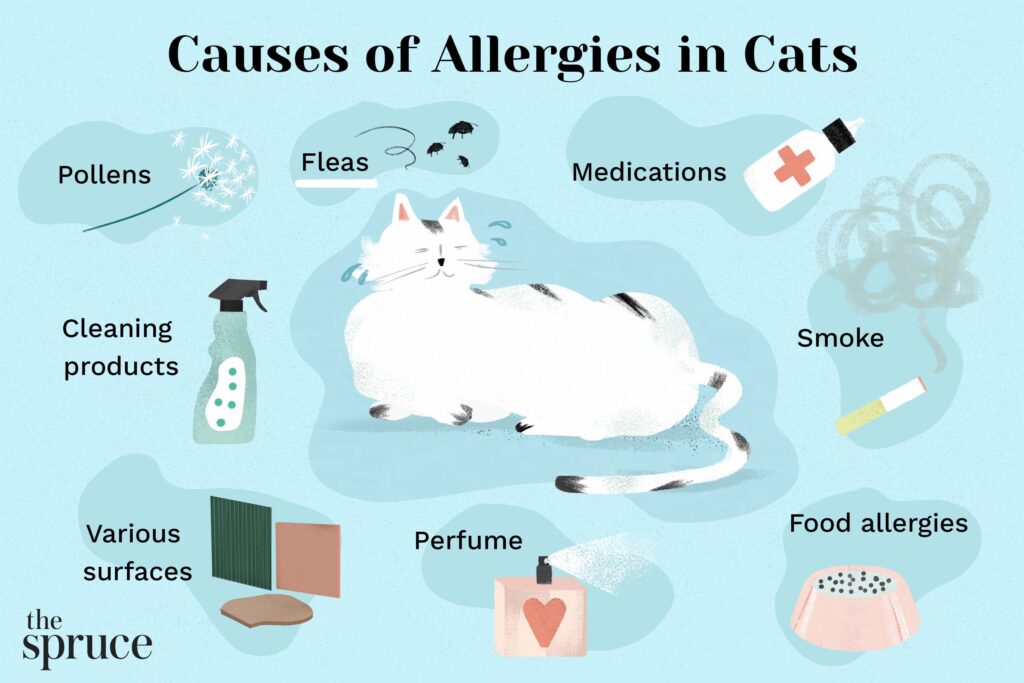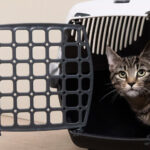⦁ Introduction
Cat allergies are a common issue affecting many people worldwide. They are caused by proteins found in a cat’s saliva, urine, and dander (dried flakes of skin) 1. These allergies can cause a variety of symptoms and can significantly impact a person’s quality of life. However, there are several solutions available to manage these symptoms and live comfortably with cats.
⦁ Causes of Cat Allergies
Pet allergies affect about 10% of the US population, with cats being the most prevalent culprits. Contrary to common assumptions, the fundamental issue is not fur or hair. People with cat allergies are really allergic to proteins in the cat’s saliva, urine, and dander. These tiny proteins cause an allergic reaction in the body because people with allergies have oversensitive immune systems. Their bodies mistake harmless things – like cat dander – for dangerous invaders, and attack them as they would bacteria or viruses.
⦁ Symptoms of Cat Allergies
Symptoms of cat allergies can include coughing and wheezing, hives or a rash on the chest and face, red, itchy eyes, redness of the skin where a cat has scratched, bitten, or licked you, runny, itchy, stuffy nose, and sneezing1. These symptoms might develop in just a few minutes or take hours to appear1. About 20% to 30% of people with allergic asthma have severe flare-ups after coming in contact with a cat1.
⦁ Solutions for Cat Allergies
While medical treatment can help control cat allergies, the best approach is simple: avoid cats and their dander1. Here are some tips:
⦁ Don’t touch, hug, or kiss cats1.
⦁ Create cat-free zones in your home2.
⦁ Open windows for ventilation2.
⦁ Keep the house clean and vacuum regularly to keep allergens at bay2.
⦁ Speak to your GP about antihistamines or nasal sprays2.
⦁ Wash your hands after touching or being licked by a cat3.
⦁ Brush the cat outside, if possible, and away from soft furnishings3.
⦁ Avoid touching a cat3.
⦁ Wash cat bedding regularly on a hot wash3.
⦁ Grooming pets regularly (by a non-allergic person) may help reduce allergen3.
Understanding Cat Allergies
Cat allergies are an immune system response to certain proteins present in the cat’s saliva, urine, or dander. When a person with a cat allergy inhales these proteins, their immune system identifies them as harmful substances. This triggers the release of chemicals like histamine, leading to allergy symptoms. It’s important to note that cat allergies are not caused by the cat’s fur, but rather by these proteins. Even hairless cats can cause allergies because they still produce these proteins.
Managing Cat Allergies
Managing cat allergies involves a combination of avoidance strategies and medical treatments. Antihistamines can help reduce symptoms like sneezing, itching, and congestion. For reducing inflammation in your nasal passages, nasal steroids are another option. Some people benefit from allergy injections (immunotherapy). These injections include progressively exposing your body to increasing doses of the allergen, which helps your immune system grow less susceptible over time.
Living with Cats Despite Allergies
Giving up loving pets is not an option for many people. In such circumstances, there are techniques to decrease allergen exposure while still managing symptoms. Using air purifiers and keeping a clean house can help minimize allergy levels.. Washing your hands after petting your cat and avoiding touching your face can also prevent allergens from entering your body. It’s also beneficial to keep cats out of certain areas of the home, like the bedroom. This creates a “safe zone” where you can retreat if your symptoms flare up.
Conclusion
Living with cat allergies can be challenging but manageable. By understanding the causes and symptoms of these allergies and implementing effective solutions, individuals can enjoy their love for cats while maintaining their health.






